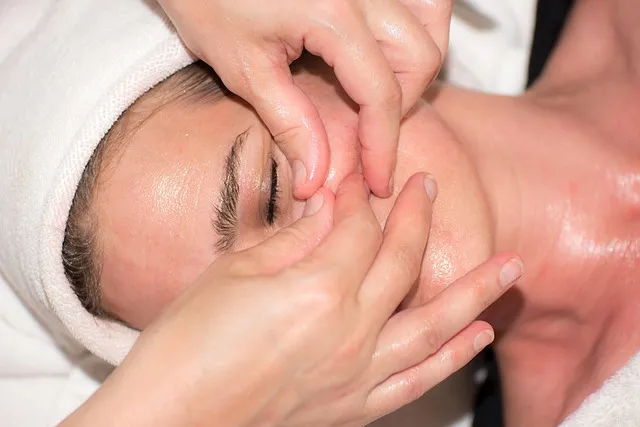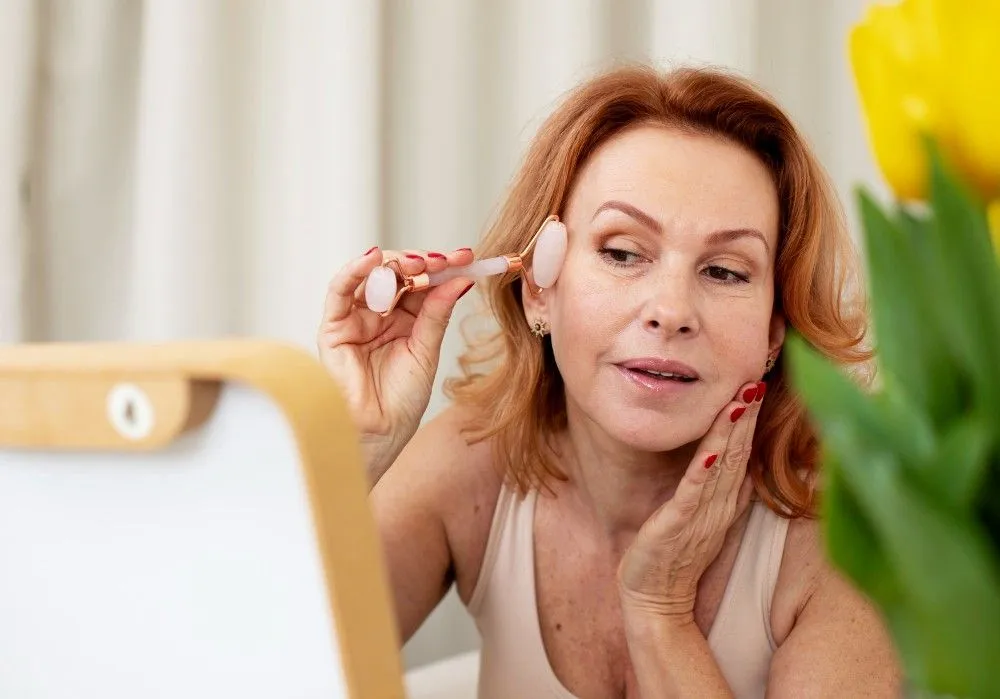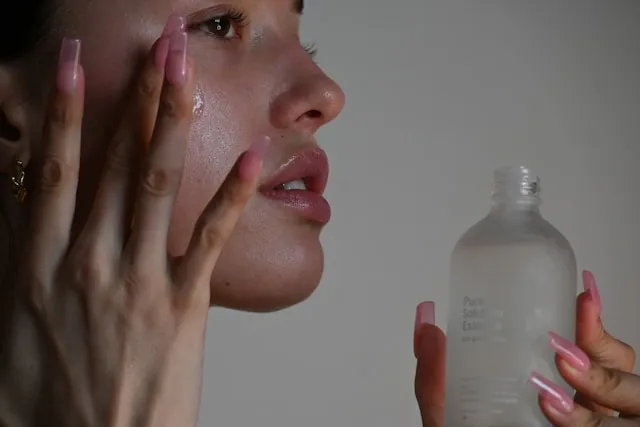Suppose you've seen beauty fanatics on social media meticulously gliding little razors over their faces. In that case, you might have questioned what it is and the benefits of dermaplaning, what it can do to the skin on your face, and when it's safe to try at the house. Benefits of dermaplane include smoother skin, improved product absorption, and a more radiant complexion. The skincare craze may appear to be a simple DIY therapy for exfoliating the epidermis or removing peach fuzz, but many dermatologists advise against doing so in most circumstances.
Furthermore, it is not suggested for any kind of skin or those with specific skin disorders. Dermatologists discuss what you need to understand about it, such as the risks, advantages, how often people must dermaplane, or how much the therapy can cost (which may limit how often you may have dermaplaning done). Continue reading more on What dermaplaning is, and the possible benefits of dermaplaning.
What is Dermaplaning?
Dermaplaning, or dermablading, is a skincare procedure involving dragging a surgical blade across the skin. The blade scrapes away the top layer of skin, removing all dead cells in the skin, hairs, debris, excess sebum, and dehydrated spots that have collected on it. It brings a fresh skin layer to the surface by effectively exfoliating, resulting in a more pleasant, healthier, and more youthful-looking complexion. This option is for people who can't afford laser skin treatments or want to increase their outcomes after utilizing an at-home exfoliating kit. After the process, your face will be smoother, and skin cells that are dead and peach fuzz will be eliminated, leaving your skin looking fresh with fewer fine lines.
What Are The Benefits of Dermaplaning?
Its main selling point is smooth, clear, or beautiful skin. In the long run, this therapy can assist with acne scars, UV damage, lines and wrinkles, and dryness. However, these are only a handful of the advantages of dermaplaning. This skincare method also provides additional benefits, some surprisingly comparable to those offered by more complicated (and expensive) facials.
1. It removes peach fuzz
Some people use this therapy to remove facial hair. Although the hairs on the skin are tiny and practically invisible, you'd be amazed at how much they affect product application. Your hair will not come back thicker or create stubble. Some do it primarily to remove hair on the surface of their skin, which relates to peach fuzz. Everybody has such fine vellus hairs covering their entire bodies, and they have a particular purpose: vellus hair keeps us pleasant and gives another layer of security to the skin. However, some people's vellus hairs are longer and darker (and thus more apparent) than others, and based on how they're feeling about it, they may prefer to have them eliminated.
2. It removes your complexion overall
Your skin suffers from daily exposure to harmful environmental chemicals, irritants, or UV radiation, regardless of the products you employ to mitigate the effects. The top layer dulls over time; exfoliating treatments can do so much. Because dermaplaning removes the stratum corneum, which contains dead skin cells & vellus hairs, the skin appears more healthy, pleasant, or younger. The skin tone is more even, and hyperpigmentation, scars, and small wrinkles are less noticeable.
3. Better makeup application
Makeup gets trapped on your hair over, you realize. As a result, your makeup can look cakey. Furthermore, rough regions and dry areas are eliminated, enabling the products to penetrate deeper. Instead of simply relaxing above the dead skin, the makeup will look much more natural. Exfoliation allows your skincare products to penetrate the skin and work better. As a result, the days immediately after a dermaplaning therapy are ideal for applying makeup. Removing skin cells that have died from the face makes it smoother and more easily absorbs makeup colors. The foundation or powder will look smooth on your skin because there are no fine wrinkles or hairs creating creases. You're self-esteem while optimizing your makeup.
4. Suits all skin types
The dermaplaning benefits also include that it is suitable for all skin types. Assume, however, that you are allergic to aspirin. In such a scenario, you should visit a dermatologist before undergoing the operation because sterile blades may be dangerous for those who are allergic the salicylic acid (present in aspirin). Nonetheless, home remedies can be used without seeing a doctor. Though it typically takes place by professionals, some people may try it at home, but do it at your own risk! To clarify, dermaplaning for men's skin is a cosmetic dermatology technique, not a hair removal therapy. This is particularly relevant for males who have coarse facial hair. An additional skin care advantage to dermaplaning in men is the reduction of ingrowing hairs in the facial area.
5. Prevent breakout
This treatment prevents future breakouts by unclogging and cleansing your pores. Exfoliation removes excess sebum and prevents it from gathering in one region, lowering the likelihood of bacteria-induced acne. Although persons with active outbreaks should avoid dermaplaning, those with acne scarring from prior breakouts will greatly benefit. Dermaplaning can help to reduce the redness and excessive pigmentation caused by acne scars.
6. Anti-Aging effect
The appearance of wrinkles and fine lines is reduced by assisting new skin cells to resurface. Dulled skin is the most common cause of aging skin. Dermaplaning shows a new, younger-looking skin layer not only beneath but also actively encourages collagen formation by assisting in the skin cell cycle.
7. More effective skincare routine
A study depicted that this is the most effective method to follow for better results in invasive procedures. Dermaplaning also increases skincare product absorption. Not only can makeup get attached to hair and dead skin, but skincare products do as well. They consume most of them, preventing the chemicals from reaching deeper into several layers of the skin. A hairless skin with fresh, unclogged pores Plus products containing helpful components = maximal skincare benefits.
8. Good for sensitive skin
If a single dermabrasion session irritates your face, dermaplaning may be a better option for you. Although a scalpel is used for scraping skin cells, the procedure is harmless. Dermaplaning is also an effective treatment option for persons with sensitive skin. If you're pregnant, dermaplaning exfoliation is a wonderful alternative because it does not expose your skin to chemicals.
9. Trigger regeneration
Another advantage of dermaplaning is that it stimulates the growth of new facial cells, allowing serums or moisturizers to penetrate the skin. Because the surgery removes the broken epidermis, it benefits individuals with warm and dry, uneven skin tones. This form of exfoliation can also remove certain acne scars. Furthermore, since your skin pores are unclogged, your skin becomes less at risk for acne breakouts. Before treatment, your skin should go through its regular thirty-day regeneration cycle.
10. Promote collagen production
The benefits of dermaplaning also involve Boosting Collagen Production for Youthful, Radiant Skin. Collagen production declines as we become older. Dermaplaning not only exposes younger skin but also stimulates collagen synthesis by exposing it to oxygen, leading to a softer appearance on your face by eliminating peach fuzz, which may irritate the skin.
How To Dermaplane At Home?
Here is a simple step-by-step guide for dermaplaning at home:
- Before starting a dermaplane facial, Clean your face thoroughly and dry it well so the skin is fresh. Make sure there are no oils, lotions, etc left on the face.
- Pull your skin a little tight using one hand on your face. Start at the top of your forehead and gently move the blade down in the direction your hair grows.
- Go along your jawline towards your chin. Be careful around your eyes and focus on areas like your cheeks, nostrils, and eyebrows. Don't go over bony areas around your eyes.
- Use a cotton pad soaked in alcohol to wipe off dead skin cells after each stroke. Depending on how thick or hairy your skin is, do about 4-5 strokes, but start with fewer to be safe.
- Don't press too hard, and avoid going over the same area too much to avoid damaging your skin.
- After dermaplaning, cleanse your face again to remove any remains.
- You can then apply soothing products like hyaluronic acid, aloe vera gel, or a healing face mask. Avoid using anything too strong. Always make sure to moisturize well and apply SPF the next day to protect your skin.
Conclusion
Although there are numerous benefits of dermaplaning, there are certain drawbacks to be aware of. Dermatologists do not advocate this surgery for patients having cystic acne, overly oily skin, hirsutism, and excessive facial hair development. The results will also differ depending on how the skin reacts to exfoliating. The process smoothes the skin and reduces the visibility of acne scars. This treatment makes your skin feel and look younger by promoting the development of new skin cells. What worked with a friend may not work for you. Before committing to this therapy, as with any kind of skin method, it is advisable to consult with a skilled practitioner.
Popular searches
kill tooth pain nerve in 3 seconds permanently | hydra facial price | azithromycin tablet uses | how to get your period in one hour | best cream for fungal infections | air fryer cancer warning | best ointment for burns | nightfall meaning | weight gain dry fruits | nightfall | loose motion tablet | what happens if we release sperm daily | fluoride free toothpaste | loose motion medicine | maximum delay in periods after taking ipill | how to get unbloated in 5 minutes | best way to detox your body in 24 hours | best medicine for acidity and gas | natural remedy to pass tissue after miscarriage | zincovit benefits | best time to drink chia seeds for weight loss
Frequently Asked Questions
How to dermaplane?
The skin should be dry and clean before going for dermaplane. Your hands should be free, and your skin should be taut and lightly position the blade against your face.
How often should you dermaplane?
You should do it in 1-3 weeks as it removes the outer layer of the skin.
How long does dermaplaning last?
It lasts for 3-4 weeks.
Is dermaplaning safe?
It is one of the safest cosmetic procedures.
Is dermaplaning actually good for your skin?
Considering its benefits, yes it is good for the skin. However, it is not recommended for everyone.
What are the disadvantages of dermaplaning?
Some disadvantages include: costly procedure, it isn't as effective as more intensive exfoliation treatments, risk of infection, redness or discoloration, and irritation.
What to avoid after dermaplaning?
Avoid direct sun exposure for 3 days, avoid extreme heat for 3 days, avoid using scrubs or other exfoliators for 1 week, and avoid chlorine for 1 week.
Reviewed by







